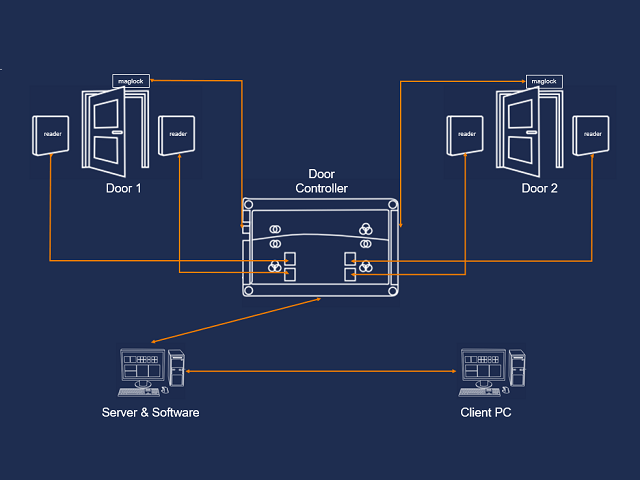Managing a Safe Return to Work with Access Control
28 April 2021

Over the next few months, many UK business and organisations will open-up to welcome customers & general visitors, and employees returning to their workplaces for the first time in over a year. Now is therefore an ideal time for many businesses to review their policies and procedures in order to protect people within their buildings. Access control systems can play an important role in how successfully companies manage the safe return to work of their employees and help to keep the R-rate below 1.
Access Control is just one of several aspects of a safe return to work strategy. Many of the practices that have helped to reduce the spread of Coronavirus should remain in place including hand sanitisation, frequent cleaning, physically distanced work spaces and when required face mask wearing.
Contactless Access Control
Where access control can play a part is in the smart management of people who want access to a building or areas within it. Contactless access control systems are ideal in this respect and there are several ways to implement ‘contactless’ either as part of a new system installation or as part of a retrofit to an existing access control solution.
The primary point of contact for door entry is the credential reader beside it. Contactless solutions including face recognition camera terminals and Bluetooth readers. Both types of reader require an approved credential to be presented to the reader in order for the door to be opened by the access control system. As well using facial biometrics, a face camera terminal can also monitor and alarm when the person presenting themselves to the reader has a high temperature; a possible sign of COVID.
Credentials can be presented to Bluetooth readers using a mobile phone application. Mobile credentials also have the benefit that they can be sent via email to those requiring them such as on-site sub-contractors, customers and supplier representatives. Being able to send a time-limited credential also means that the person visiting automatically signs into the visitor management system rather than the more traditional paper-based visitor logged when they arrive or leave the site.
Occupancy Management Solutions
At the heart of the software driving an access control system is a database storing credentials and access control information for the building. From the database it should be possible to generate reports on who is where and when within a building. This allows for the setting-up of occupancy management for building areas which can quickly become over-populated. Typical examples include building entrances and dispatch areas, canteens, rest areas, gyms, small offices and production testing areas. Access control systems with occupancy management features can help to manage over crowding and maintain social distancing.
Contact Tracing
Another usage of the information from an access control database is for contact tracing. Having an assigned credential or set of credentials for a person provides a detailed log of their whereabouts and routing within a building. This can be compared to others if there is a need to identify possible contacts for any anyone who later tests positive for Coronavirus.
It is relatively easy for those companies with an access control system to safely manage the return to work of their staff, visitors and contractors on site. It may be possible to update existing systems contactless reader solutions as part of a retrofit. A new access control system can also be relatively easy to install if it has the features required to safely manage people, such as the Remsdaq Entro series.
